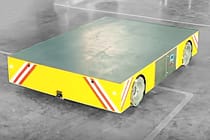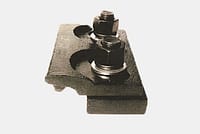Посібник з технічного обслуговування та перевірки електрообладнання мостового крана
Зміст
Мостові крани відіграють вирішальну роль у промисловому виробництві, а безпека та надійність їхніх електричних систем безпосередньо пов’язані з належним функціонуванням обладнання та безпекою операторів. Тому технічне обслуговування електричних систем є ключовим аспектом щоденного обслуговування кранів. Ця стаття містить детальний огляд конкретних завдань, пов’язаних із обслуговуванням електричних систем мостових кранів, щоб бути корисною для вас.

Обслуговування електрики мостового крана
Встановіть систему технічного обслуговування електрообладнання, усі цикли технічного обслуговування регулюються відповідно до режиму роботи та умов навколишнього середовища. мостовий кран, усі наведені нижче правила застосовуються до загальної умови.
Щоденне технічне обслуговування
Завдання з щоденного технічного обслуговування зазвичай виконують кранівники під час змін. Ці завдання включають:
- Очищення: видаліть пил, мул і масло із зовнішнього боку електрообладнання.
- Перевірка: Перевірте на дотик двигуни, електромагніти, контакти контролера та резистори на наявність ненормального нагрівання. Перевірте наявність витоків масла з підшипників і переконайтеся, що з’єднання проводів надійно з’єднані.
- Спостереження: відкриваючи оглядові кришки або корпуси, уникайте потрапляння пилу та залізних ошурків у внутрішні компоненти. Записуйте будь-які незвичайні результати для подальшого аналізу.
Технічне обслуговування раз на два або десять днів
Більш ретельні перевірки повинні проводитися кожні два тижні або кожні десять днів електриком і машиністом крана. Обсяг технічного обслуговування наступний:
- Внутрішнє очищення: видаліть пил і мул з внутрішньої частини електричного обладнання.
- Перевірка компонентів: перевірте знос щіткотримача та контактного кільця вугільної щітки двигуна. Перевірте, чи немає ненормального шуму від двигуна, електромагніту, реле та електромагнітної головки.
- Ремонт і регулювання: перевірте та відремонтуйте контролер і контакти перемикача.
Щорічне технічне обслуговування або капітальний ремонт
Щорічне технічне обслуговування або капітальний ремонт повинні проводитися кваліфікованими електриками. Цей комплексний процес технічного обслуговування мостового крана включає:
- Розбирання та очищення: розберіть електричне обладнання та почистіть його. Провести капітальний ремонт опорних рам обладнання, очистити підшипники кочення двигуна, замінити мастило.
- Вимірювання та заміна: виміряйте зазор між ротором і статором. Замініть підшипники кочення, якщо вони нерівні. Виміряйте опір ізоляції, просушіть її, якщо необхідно, усуньте всі проблеми, виявлені під час щорічного ремонту, і замініть частини, які ремонту не підлягають. Обсяг щорічного ТО та капітального ремонту визначається фактичним зносом і ступенем старіння обладнання.
Перевірка електрики мостового крана
1. Електричний двигун
| Предмети | Зміст | Стандартний | ||
|---|---|---|---|---|
| Обмотки двигуна | Перевірте опір ізоляції та перевірте на перегрів. | Опір ізоляції повинен відповідати вказаному діапазону. | ||
| Підшипники двигуна | Перевірте стан мастила та почуйте ненормальний шум. | Належне змащення та відсутність ненормального шуму. | ||
| Ковзаючі кільця | Перевірте, чи немає зміни кольору, тріщин або ослаблених з’єднань на клемах. | Без зміни кольору, пошкоджень, тріщин або ослаблених з'єднань. | ||
| Щітки та повідці | Перевірте знос, ослаблення, правильний тиск, накопичення нагару та іскріння. | Відсутність надмірного зносу, належний тиск, відсутність іскріння чи накопичення. | ||
2. Система струмоприймача
(1) Шина та рейка
| Предмети | Зміст | Стандартний |
|---|---|---|
| Ковзний дріт, струмознімна рейка | Перевірте, чи немає деформацій, потертостей або пошкоджень. Перевірте, чи це нормально для натяжного пристрою. Перевірте стан контакту ковзного дроту та ковзного блоку. Перевірте, чи немає ослаблених опор ізолятора. |
Без значних деформацій, зносу та пошкоджень. Правильний натяг. Хороший контакт. Жодних слабких опор. |
| Кришки, оболонки та корпуси | Перевірте наявність пошкоджень або деформацій і переконайтеся, що пристрої запобігання ураження електричним струмом функціонують належним чином. | Відсутність пошкоджень і значних деформацій; адекватний зазор від ковзних ліній. |
| Ізольовані колектори | Перевірити електропроводку ізольованих колекторів на наявність аномалій. | Надійне з'єднання жил кабелю, муфт і корпусів. |
| Ізолятори | Перевірте, чи немає від’єднання, розхитаності, тріщин або бруду. | Відсутність відшарувань, розхитаності, тріщин або бруду. |
(2) Струмоприймач
| Предмети | Зміст | Стандартний |
|---|---|---|
| Механічні частини | Перевірити на знос і пошкодження. Забезпечте належне змащення. | Без значного зносу чи пошкоджень. Правильне змащування. |
| Весна | Перевірте на наявність деформації, корозії або пошкодження від втоми. | Відсутність деформації, значної корозії або пошкодження від втоми. |
| Електропроводка та ізоляція | Перевірте проводку на наявність роз’єднань і перевірте ізолятори на наявність пошкоджень або забруднення. | Жодних відключень, пошкоджень або забруднень. |
| З'єднувальні болти | Перевірте кріпильні деталі на предмет ослаблення або від’єднання. | Ніякої розкутості чи розшарування. |
(3) Кабелі живлення
| Предмети | Зміст | Стандартний |
|---|---|---|
| Ізоляційний шар | Перевірте наявність пошкоджень. | Без пошкоджень. |
| Точки підключення | Перевірте кріпильні деталі на предмет ослаблення або від’єднання. | Ніякої розкутості чи розшарування. |
| Кабелі та напрямні пристрої | Огляньте розтягнуті ділянки кабелю на предмет згинання, скручування чи пошкодження. Перевірте роботу кабелепроводу. |
Без вигинів, скручувань і пошкоджень. Плавна робота. |
3. Електричні компоненти та система керування
(1) Перемикачі
| Предмети | Зміст | Стандартний |
|---|---|---|
| Перемикач | Перевірте, чи немає аномалій у роботі перемикача, а також на зовнішні пошкодження. | Робота повинна бути нормальною і без зовнішніх пошкоджень. |
| Контактні частини | Перевірте петлі та затискачі на відповідність контактного тиску. | Контактний тиск має бути відповідним. |
| Запобіжник | Перевірте правильність встановлення та відповідну потужність запобіжника. | Правильне встановлення та відповідна ємність. |
(2) Контактори
| Предмети | Зміст | Стандартний |
|---|---|---|
| Контакти | Перевірте контактний тиск і перевірте контактну поверхню на наявність пошкоджень. | відсутність зазорів на контактних поверхнях; повне відділення при роз’єднанні. |
| Весна | Перевірте на наявність пошкоджень, деформацій, корозії або втомленого старіння. | Відсутність пошкоджень, деформацій, значної корозії або втомного старіння. |
| Рухоме ядро | Перевірте наявність сторонніх предметів на контактній поверхні сердечника. Переконайтеся, що під час роботи не чутно аномального шуму та не зламано екрануючі котушки. Огляньте пробку на предмет зносу чи пошкоджень. Переконайтеся, що немає зазору, коли ланцюг розімкнутий. |
Без сторонніх предметів. Немає ненормального шуму або зламаних екрануючих котушок. Без значного зносу чи пошкоджень. Без розриву. |
| Дугогасильна котушка | Перевірте, чи не ослаблені деталі кріплення. | Ніякої розкутості. |
| Дугогасильна сітка | Перевірте розташування та перевірте, чи не горить. | Правильне розташування; немає значного печіння. |
| Кріплення | Перевірити на розхитаність. | Ніякої розкутості. |
(3) Реле
| Предмети | Зміст | Стандартний |
|---|---|---|
| Весна | Перевірте, чи немає вигину, деформації, корозії чи пошкодження від втоми. | Відсутність згинання, деформації, значної корозії або пошкодження від втоми. |
| Реле часу | Перевірте його функцію синхронізації. | Точний час. |
| Блок затримки демпфування | Огляньте масляний циліндр на предмет від’єднання або витоку масла. Перевірте рівень і якість масла. |
Відсутність від'єднання або протікання. Рівень і якість масла повинні бути нормальними. |
| Контактна частина | Перевірте контактну поверхню на наявність пошкоджень і зносу. | Без значних пошкоджень або зносу. |
| Механізм роботи та ручний тест | Керуйте вручну та перевіряйте його робочий стан. | Робота має бути нормальною. |
(4) Перемикач керування контролером
| Предмети | Зміст | Стандартний |
|---|---|---|
| Внутрішня проводка | Перевірте підключення клем. Огляньте електропроводку та ізоляцію на предмет забруднення чи пошкодження. Перевірте точки входу дроту на наявність аномалій. |
Ніякого послаблення чи від’єднання. Жодних пошкоджень, забруднень або зносу. Ніяких аномалій. |
| Затягнуті з'єднання | Огляньте кріплення на предмет ослаблення. | Ніякої розкутості. |
| Пристрій захисту від ураження електричним струмом | Перевірте захисний пристрій на наявність несправностей. | Без пошкоджень, відшарувань, деформацій або псування. |
| Робочий стан | Перевірте, чи нормальний робочий стан. Перевірте роботу обмежувача нульового положення та ручки. |
Плавна робота. Обмежувач і ручка повинні надійно зупинятися. |
| Диски і ролики зчеплення | Перевірте контактний тиск. Перевірте кріплення на предмет ослаблення. Перевірити змащування роликів. |
Повний контакт і належне роз’єднання. Ніякої розкутості. Адекватне змащення. |
| Скинути пружину | Перевірте на наявність поломок, деформацій, корозії чи втомлених пошкоджень. | Відсутність поломок, деформацій, значної корозії чи втомних пошкоджень. |
| Підшипники та шестерні | Перевірити стан мастила. | Правильне змащування та адекватне змащення. |
| Контактні пластини та точки | Перевірте контактну поверхню на наявність пошкоджень або зносу. Перевірте глибину контакту. |
Без значних пошкоджень або зносу. Повний контакт. |
| Ізоляційна штанга | Огляньте на наявність тріщин або забруднення. | Без тріщин і значних забруднень. |
| Табличка з відображенням напрямку руху | Перевірте на наявність пошкоджень або забруднення. | Чіткий дисплей; відсутність значного забруднення. |
| Введення дроту | Перевірте точки входу дроту на наявність аномалій. | Без пошкоджень та значних пошкоджень. |
| Перемикач противаги | Перевірте робочий стан. Огляньте на наявність пошкоджень або забруднення. Якщо металевий корпус, перевірте заземлення. Переконайтеся, що гумові кабелі не прикладають надмірних зусиль. Огляньте корпус, кришку та захисні пристрої підвіски. |
Нормальна робота. Без пошкоджень і забруднень. Ніякої розкутості. Без надмірної сили. Без пошкоджень. |
(5) Резистори
| Предмети | Зміст | Стандартний |
|---|---|---|
| Термінали | Перевірте кріплення на предмет ослаблення. | Ніякої розкутості. |
| Резисторні пластини | Огляньте на наявність тріщин або пошкоджень. Перевірте контакт між пластинами. Переконайтеся, що немає розхитаності. Перевірте клеми, з’єднання та ізоляцію на предмет перегріву або горіння. Перевірте наявність пилу на ізоляторах. |
Без тріщин і пошкоджень. Відсутність контакту між пластинами. Ніякої розкутості. Без перегріву і горіння. Відсутність накопичення пилу. |
| З'єднувальні кріплення | Перевірте кріплення на предмет ослаблення. | Ніякої розкутості. |
4. Електропроводка та зв'язок
| Предмети | Зміст | Стандартний | ||
|---|---|---|---|---|
| Оголена внутрішня проводка | Перевірте захисний шар на наявність пошкоджень. Перевірте, чи немає надмірного натягу, скручування чи ослаблення затискачів. |
Без пошкоджень. Не має бути надмірно тугим, перекрученим або вільним. |
||
| Освітлювальні та сигнальні лампи | Перевірте, чи відповідає яскравість. Перевірте, чи немає ослаблених з’єднань, кріплень і пошкоджень ламп або захисних пристроїв. |
Забезпечте достатню яскравість для інструментів і операцій. Без розшатування та пошкоджень. |
||
| Пристрої зв'язку | Перевірити працездатність засобів зв'язку. | Комунікація має функціонувати нормально. | ||
| Опір ізоляції ланцюга | Виміряйте опір ізоляції кожної гілки в ланцюзі розподілу на наявність аномалій. | Опір ізоляції має бути в межах зазначеного діапазону. | ||
Висновок
Проводячи регулярне технічне обслуговування та дотримуючись суворих протоколів безпеки, можна значно підвищити надійність і безпеку електричних систем мостових кранів. Будь то щоденні перевірки, періодичні перевірки чи щорічні капітальні ремонти, ці методи допомагають продовжити термін служби обладнання та зменшити ризик несподіваних збоїв і аварій. Забезпечення стабільності електричної системи не тільки підвищує ефективність роботи, але й забезпечує більш безпечне робоче середовище для операторів.
Надішліть свій запит
- Електронна пошта: sales@hndfcrane.com
- WhatsApp: +86 191 3738 6654
- Телеграма: +86 191 3738 6654
- Тел.: +86-373-581 8299
- Факс: +86-373-215 7000
- Додати: промисловий район Чаннао, місто Сіньсян, провінція Хенань, Китай
 WeChat
WeChat












































































































